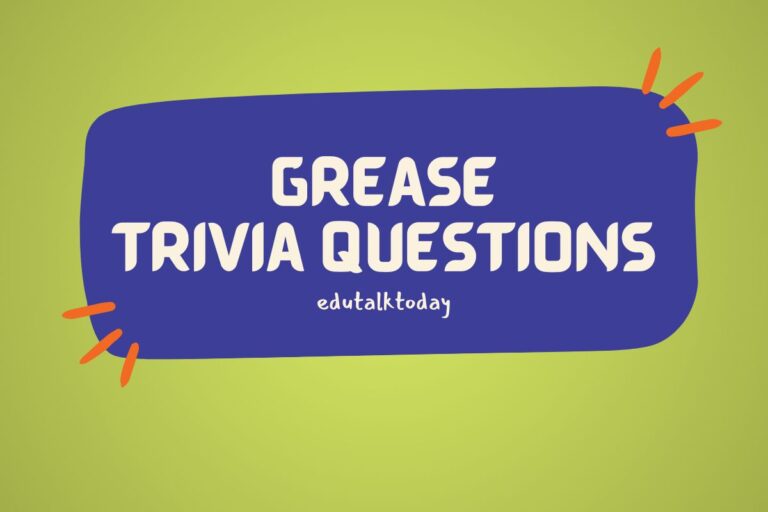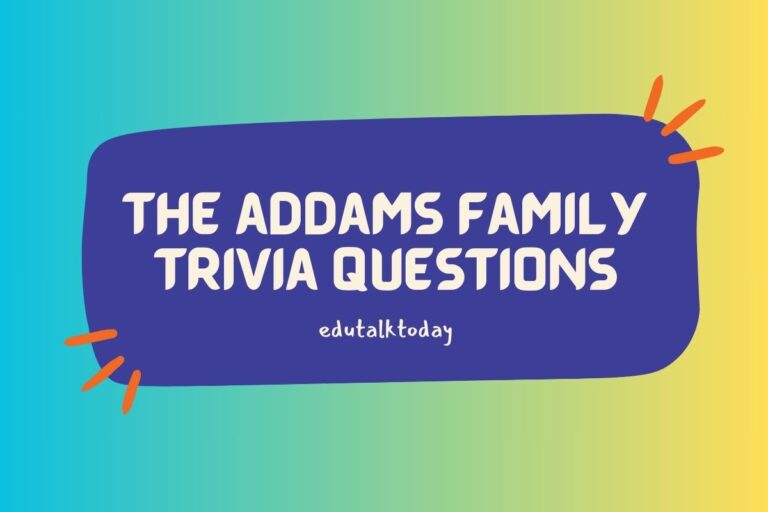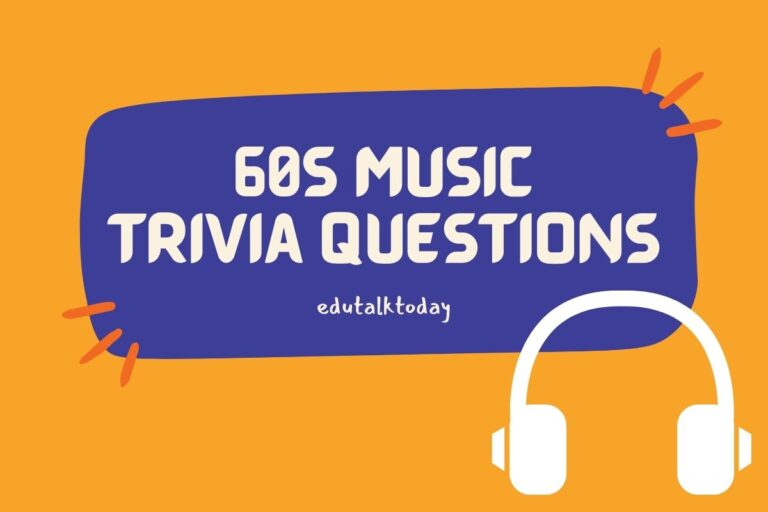28 Kwanzaa Trivia Questions

Kwanzaa is a vibrant and meaningful holiday celebrated by millions of African Americans and people of African descent around the world.
Created by Dr. Maulana Karenga in 1966, this week-long cultural celebration is filled with rituals, principles, and customs that reflect the rich heritage of African cultures.
Whether you’re a seasoned Kwanzaa enthusiast or new to this holiday, testing your knowledge with some Kwanzaa trivia questions can be a fun and educational way to learn more about this special occasion.
So, gather your family and friends and see how well you know the holiday of Kwanzaa with these trivia questions.
Kwanzaa Trivia Questions
- What is the origin of the name “Kwanzaa,” and what does it signify in its original language?
- Kwanzaa celebrates seven core principles. Name them all and explain the significance of one.
- Who founded Kwanzaa, in what year, and what was the primary purpose behind its creation?
- Kwanzaa is observed for seven days. Can you list the symbolic items used during the celebrations and explain the significance of two of them?
- How is the day of Kwanzaa decided each year, and what is the range of dates during which it is celebrated?
- Kwanzaa integrates practices from various African harvest celebrations. Can you name at least two African countries whose festivals influenced Kwanzaa’s creation?
- Describe the traditional Kwanzaa greeting and its meaning.
- During Kwanzaa, a special candle-lighting ceremony takes place. What is the name of this ceremony, and how is it performed?
- What is the significance of the colors red, black, and green in Kwanzaa celebrations?
- Kwanzaa concludes with a day dedicated to reflection and recommitment to the seven core principles. What is this final day called, and what are some traditional activities performed on this day?
- Kwanzaa incorporates elements from various African cultures. Can you name one specific cultural or historical influence that shaped the celebration?
- The Kwanzaa feast, or Karamu, is held on a specific night during the celebration. Which night is it, and what types of food are typically served?
- What role do children play in Kwanzaa celebrations, and can you name any specific activities or responsibilities they might have?
- Each of the seven candles in a Kinara has a specific meaning. Can you name the color and principle associated with the candle lit on the third day?
- Kwanzaa’s founder, Dr. Maulana Karenga, was influenced by his academic background in creating the holiday. What was his field of study, and how did it influence Kwanzaa’s development?
- Can you explain the concept of “Kujichagulia” and give an example of how one might demonstrate this principle during Kwanzaa?
- The Zawadi, or gifts, given during Kwanzaa have particular significance. What criteria should these gifts meet, according to traditional practices?
- How has Kwanzaa impacted or been integrated into American culture outside of the African American community?
- The celebration of Kwanzaa has spread to other countries. Can you name at least two other countries where Kwanzaa is celebrated?
- What is a common misconception about Kwanzaa, and what is the truth behind it?
- How does the celebration of Kwanzaa encourage economic empowerment and community development within African American communities?
- What specific African language is primarily used in Kwanzaa celebrations for terms and principles, and why was this language chosen?
- Aside from the seven core principles, Kwanzaa also promotes a set of seven symbols. Can you name three more symbols not previously mentioned and their meanings?
- Kwanzaa involves a libation ceremony. What is the purpose of this ceremony, and what elements are typically used?
- How do participants traditionally decorate their homes during Kwanzaa, and what do these decorations symbolize?
- What is the significance of the day of reflection, known as “Siku ya Taamuli,” in the Kwanzaa week, and how is it observed?
- In the context of Kwanzaa, how is the concept of “Ujamaa” applied in modern African American communities?
- Can you describe a traditional Kwanzaa ceremony from the beginning to the end, including the order in which candles are lit?
Answers
- The name “Kwanzaa” is derived from the Swahili phrase “matunda ya kwanza,” which means “first fruits.”
- The seven core principles (Nguzo Saba) are Umoja (Unity), Kujichagulia (Self-Determination), Ujima (Collective Work and Responsibility), Ujamaa (Cooperative Economics), Nia (Purpose), Kuumba (Creativity), and Imani (Faith). For example, Umoja emphasizes the importance of unity in the family, community, nation, and race.
- Kwanzaa was founded by Dr. Maulana Karenga in 1966 to celebrate African American culture and to inspire African Americans to connect with their African heritage.
- The symbolic items include the Kinara (candle holder), Mishumaa Saba (seven candles), Kikombe cha Umoja (Unity Cup), Mkeka (mat), Mazao (crops), and Zawadi (gifts). The Kinara represents the original stalk from which the African people originated, and the Mishumaa Saba represent the seven principles.
- Kwanzaa is celebrated from December 26th to January 1st each year.
- Kwanzaa’s creation was influenced by harvest celebrations from countries like Ghana and Nigeria.
- The traditional greeting during Kwanzaa is “Habari gani,” which is Swahili for “What’s the news?” or “How are you?”
- The candle-lighting ceremony is called “Umoja” on the first day, and one candle is lit each day to represent one of the seven principles. The ceremony itself is called “Kuumba.”
- The colors red, black, and green represent African people, the struggles they endure, and the future and hope that comes from their struggles, respectively.
- The final day of Kwanzaa is called “Imani,” which focuses on faith. Traditional activities include reflection on the seven principles and recommitment to their practice throughout the coming year, as well as a feast (Karamu) on December 31st.
- Kwanzaa draws inspiration from traditional African first fruit harvest festivals, including aspects of Ashanti and Zulu celebrations.
- The Karamu is held on the sixth night of Kwanzaa, December 31st. Foods typically served include dishes from various African countries, soul food, and Caribbean delicacies.
- Children often participate in recitations and performances that reflect the values of Kwanzaa. They may also help in lighting the Kinara.
- The candle lit on the third day is green, representing the principle of Ujima (Collective Work and Responsibility).
- Dr. Maulana Karenga’s field of study was African studies. His academic work focused on African culture and history, which influenced the creation of Kwanzaa as a way to celebrate African heritage.
- “Kujichagulia” means self-determination. One might demonstrate this principle by setting personal goals that reflect one’s unique identity and cultural heritage.
- Zawadi should be educational and cultural, aimed at enriching the recipient’s knowledge and connection to their African heritage.
- Kwanzaa has been recognized in educational settings, public celebrations, and by various cultural institutions in the U.S., highlighting its principles and values across diverse communities.
- Kwanzaa is celebrated in countries like Canada and the United Kingdom, among others, where there are significant African diaspora communities.
- A common misconception is that Kwanzaa is a religious holiday; in truth, it is a cultural celebration that does not align with any particular religion and can be celebrated by individuals of any faith.
- Kwanzaa encourages economic empowerment through the principle of Ujamaa (Cooperative Economics), which promotes supporting Black-owned businesses and creating and sustaining community stores and programs.
- Swahili is the primary language used for Kwanzaa terms and principles, chosen because it is a pan-African language, symbolizing unity among African peoples.
- Three additional symbols include:
- Corn (Mahindi): Represents children and the future which they embody.
- Unity Cup (Kikombe cha Umoja): Used to perform the libation ceremony, symbolizes unity.
- Gifts (Zawadi): Symbolize the labor and love of parents and the commitments made and kept by the children.
- The libation ceremony (Tamshi La Tambiko) honors ancestors, and water or juice is poured into a cup and shared among participants, or poured onto the ground as a tribute.
- Homes are decorated with items of African art, colorful African cloth (like kente), and fresh fruits that represent African idealism. These decorations symbolize African heritage, culture, and community values.
- “Siku ya Taamuli” is a day of reflection on the seventh day of Kwanzaa (January 1st). It’s observed by reflecting on the past year, honoring ancestors, and focusing on personal and collective goals and values.
- “Ujamaa” encourages the development and patronage of Black-owned businesses, as well as community investment and shared wealth, to improve economic conditions within African American communities.
- A traditional Kwanzaa ceremony starts with a welcome statement, followed by drumming and music. Participants then perform the libation ceremony, light the Kinara candles from left to right (starting with the black candle for Umoja), discuss the principle of the day, enjoy a feast (Karamu) on the sixth day, and end with a day of reflection. Each candle, representing a principle, is lit on consecutive nights.






